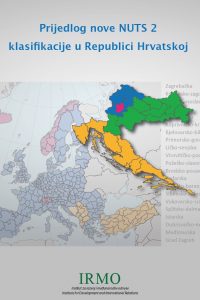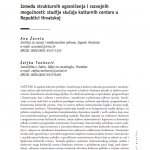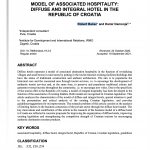
Authors: Jakša Puljiz and Ivana Biondić
Publisher: IRMO
Year: 2019
The research team of the Institute for Development and International Relations prepared the study “Proposal of the New NUTS 2 Classification in the Republic of Croatia” for the Ministry of Regional Development and EU Funds. The study gives recommendations for the modification of NUTS 2 regions in Croatia based on the set key objectives:
- To ensure the best possible conditions for the use of Cohesion Policy funds on the largest possible area in the Republic of Croatia;
- To achieve the highest possible degree of advantages for as many inhabitants of the Republic of Croatia as possible by following the rules for granting regional aid;
- To form as homogenous regions as possible in terms of degree of development and all the other important features.
Nine possible variants of the classification were identified in the analysis. Through a specially developed assessment model each of the proposed variants were graded and the best two variants were chosen. The first selected variant is the one according to which Croatia would be split into four NUTS 2 regions as following:
- Central and Eastern Croatia: Bjelovar-Bilogora, Virovitica-Podravina, Požega-Slavonia, Brod-Posavina, Osijek-Baranja, Vukovar-Srijem, Sisak-Moslavina and Karlovac County;
- Northern Croatia: Zagreb, Krapina-Zagorje, Varaždin, Međimurje, Koprivnica-Križevci County;
- Adriatic Croatia: Primorje-Gorski Kotar, Lika-Senj, Zadar, Šibenik-Knin, Split-Dalmatia, Istara and Dubrovnik-Neretva County;
- City of Zagreb.
The second variant differs from the first one only in the fact that the Bjelovar-Bilogora County is located in Northern Croatia and not in the Central and Eastern Croatia.
Both proposals for a new classification of the NUTS 2 regions enable higher level of regional aid for more Croatian regions than what is currently possible with existing classification. This would be the most positive change brought by the new classification. An additional important benefit is the fact that the statistics collected at the NUTS 2 level would be much more useful for regional analysis and regional policy than it is now.
On the other hand, the proposed new classification suggests a slightly worse position for the users of regional grants from the City of Zagreb, as it is proposed a significantly higher national co-financing obligation for ESI funded projects in the area.




